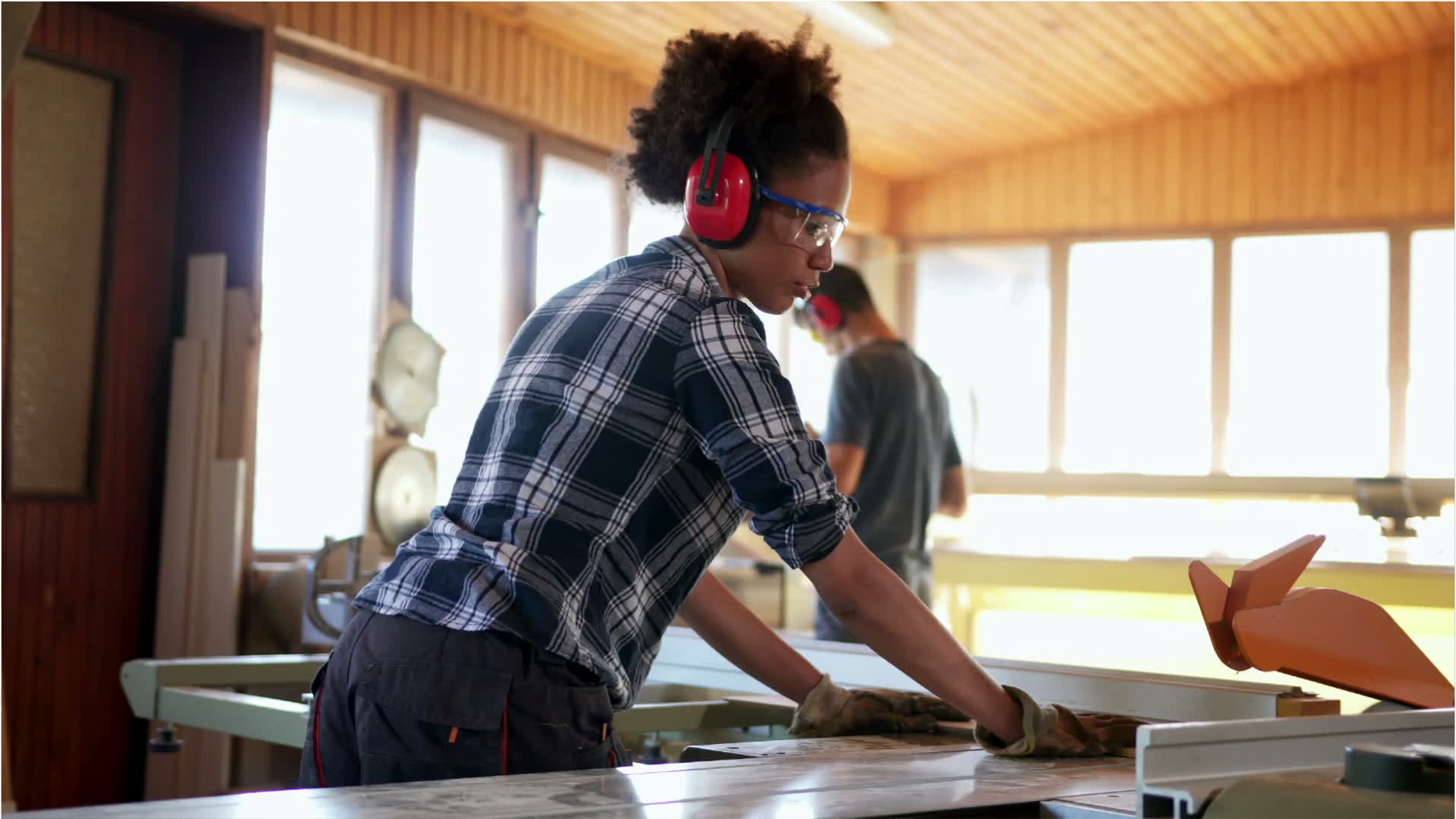Sawing Machine Setters, Operators, & Tenders, Wood
Resaw Operator, Rip Saw Operator, Saw Operator, Sawyer
What they do:
Set up, operate, or tend wood sawing machines. May operate computer numerically controlled (CNC) equipment. Includes lead sawyers.
On the job, you would:
- Inspect and measure workpieces to mark for cuts and to verify the accuracy of cuts, using rulers, squares, or caliper rules.
- Adjust saw blades, using wrenches and rulers, or by turning handwheels or pressing pedals, levers, or panel buttons.
- Mount and bolt sawing blades or attachments to machine shafts.
Knowledge
Manufactured or Agricultural Goods
- manufacture and distribution of products
Engineering and Technology
- mechanical
Skills
Basic Skills
- keeping track of how well people and/or groups are doing in order to make improvements
- thinking about the pros and cons of different ways to solve a problem
Problem Solving
- noticing a problem and figuring out the best way to solve it
Abilities
Hand and Finger Use
- hold or move items with your hands
- keep your arm or hand steady
Controlled Movement
- quickly change the controls of a machine, car, truck or boat
- change when and how fast you move based on how something else is moving
Endurance
- exercise for a long time without getting out of breath
Personality
People interested in this work like activities that include practical, hands-on problems and solutions.
They do well at jobs that need:
- Attention to Detail
- Dependability
- Cautiousness
- Stress Tolerance
- Perseverance
- Achievement Orientation
Technology
You might use software like this on the job:
Spreadsheet software
- Microsoft Excel
Presentation software
- Microsoft PowerPoint
Document management software
- Adobe Acrobat
Education
Education: (rated 2 of 5)
high school diploma/GED or
no high school diploma/GED
usually needed
no high school diploma/GED
usually needed
Job Outlook
Below Average
New job opportunities are less likely in the future.
Explore More
- Cutters & Trimmers, Hand
- Cutting & Slicing Machine Setters, Operators, & Tenders
- Grinding & Polishing Workers, Hand
- Grinding, Lapping, Polishing, & Buffing Machine Tool Setters, Operators, & Tenders, Metal & Plastic
- Woodworking Machine Setters, Operators, & Tenders
You might like a career in one of these industries:
See more details at O*NET OnLine about Sawing Machine Setters, Operators, & Tenders, Wood.





